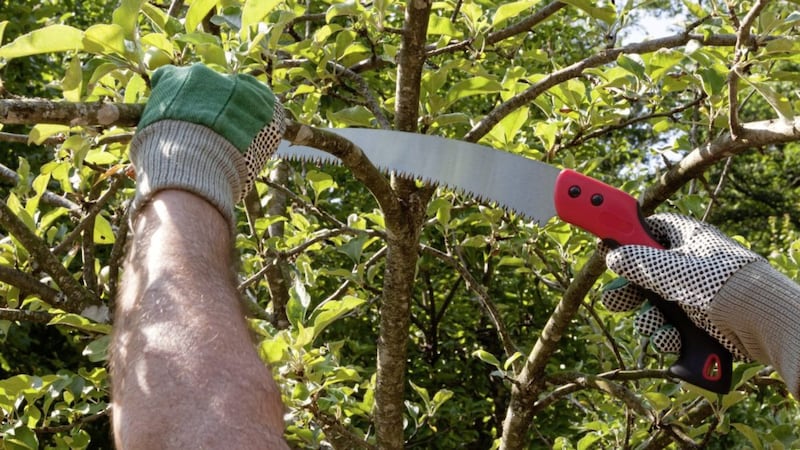SPRING creeps up on you. One minute you’re debating whether St Brigid’s Day really marks the end of winter then the next it’s time to put your clock forward.
There are seven weeks between these two dates yet they seem to have passed in a flash, snowdrops and crocuses come and gone before you can say "there’s a bit of a stretch in the evenings".
Not only does this time-space compression mean I’m getting old, but also that the jobs are piling up as numerous spring deadlines whoosh by.
There’s spud planting, seed sowing, pond cleaning, hedge trimming, lawn care and the repositioning of several perennials, to name but a few of the outstanding seasonal tasks that must be tackled in a limited window.
Then there’s the pruning, an annual exercise that is both practical and ritualistic; artistic but also scientific.
In just a few days the vernal equinox will have passed and there’ll be more daylight than darkness, prompting a surge in growth across the northern temperate zone. It’s best to get all but emergency pruning out of the way in and around this date, whether in the ornamental garden or the edible garden.
Pruning is important for a number of reasons and ensures a plant doesn’t become leggy and unruly, which ultimately weakens it.
Plants will respond better to pruning as they emerge from dormancy. There’s less risk of disease infecting the cut in the colder weather, so the earlier you perform the surgery the better.
A spring prune also helps get the maximum length from the growing season, ensuing the tree or shrub is at its strongest and most robust come the autumn.
Equally important is consideration for wildlife and birds in particular. Spring marks the beginning of the breeding season, so to ensure we don't disturb or even injure nesting birds get all your pruning and cutting completed as early as possible.
Many people are under the misapprehension that birds only nest between April and September, but nest-building for the likes of wrens, magpies, robins and blackbirds begins earlier.
Those unfamiliar with the annual pruning ritual may indeed wonder what purpose it serves, as to the uninitiated eye when you cut a tree you damage it.
Certainly slicing randomly at a tree or shrub will damage it and make it susceptible to disease, but a cut from a skilled, confident hand will enhance growth by prompting the release of key hormones.
While pruning does demand some expertise and a degree of dexterity, no gardener should be intimidated by it. A little reading-up on the subject, with particular regard to the species in your own garden, and you’ll have enough knowledge to grasp those secateurs with new-found confidence and determination.
The pruner’s tools should be sharp and include the aforementioned secateurs, a set of loppers for thicker and prickly branches, and a pruning saw for those branches with a significant girth.
Shears can be used on lighter bushes and plants where precision isn’t called for.
All cuts should be made decisively at a 45-degree angle just above a bud or pair of buds. Of course, it’s not just trees and shrubs that need pruning: perennials, annuals, bedding and even your house plants, will all benefit from the occasional trim.
The main targets in my garden this weekend will be the numerous willow and several group three clematis, Cornus alba (dogwood), Lavatera, hydrangea, and buddleia (butterfly bush), which with an annual prune produces a profusion of nectar-rich blooms during high summer.
The trees and shrubs that will escape an assault from the secateurs this time around are those which produce flowers or fruit on last year's growth, such as Senecio, group two clematis and summer-fruiting raspberries.









